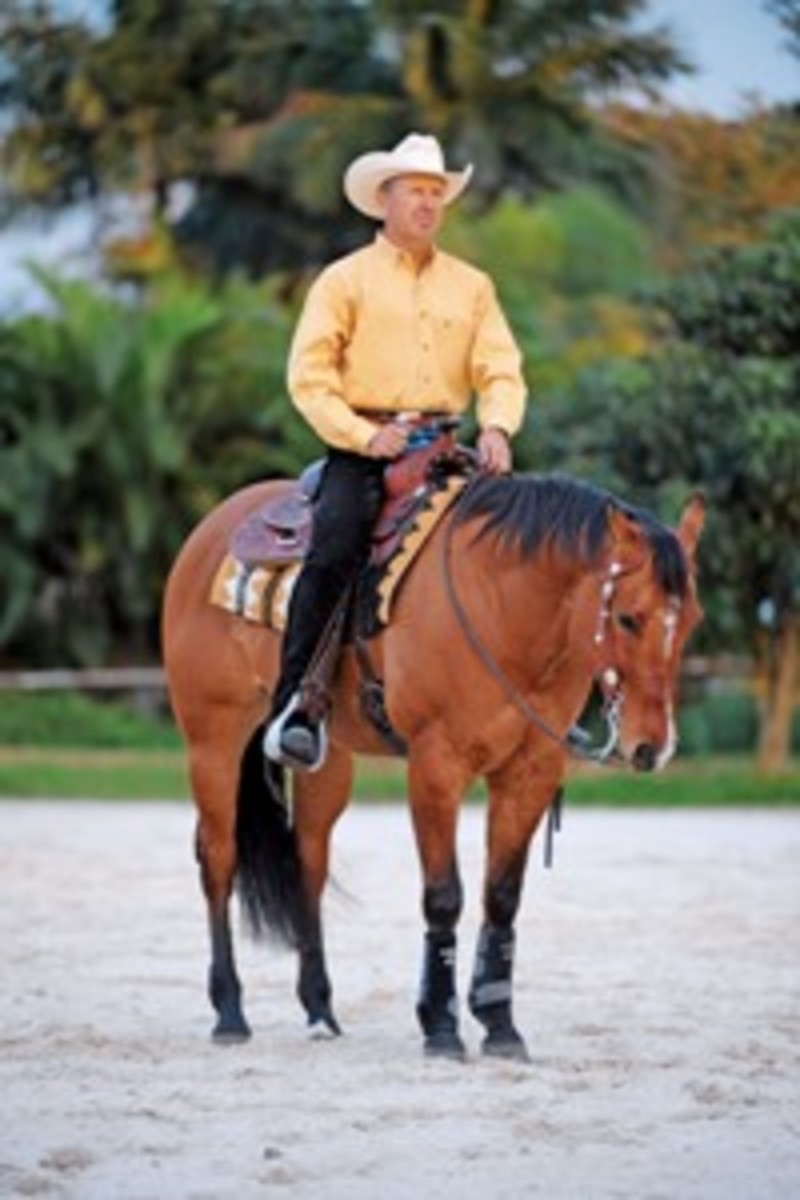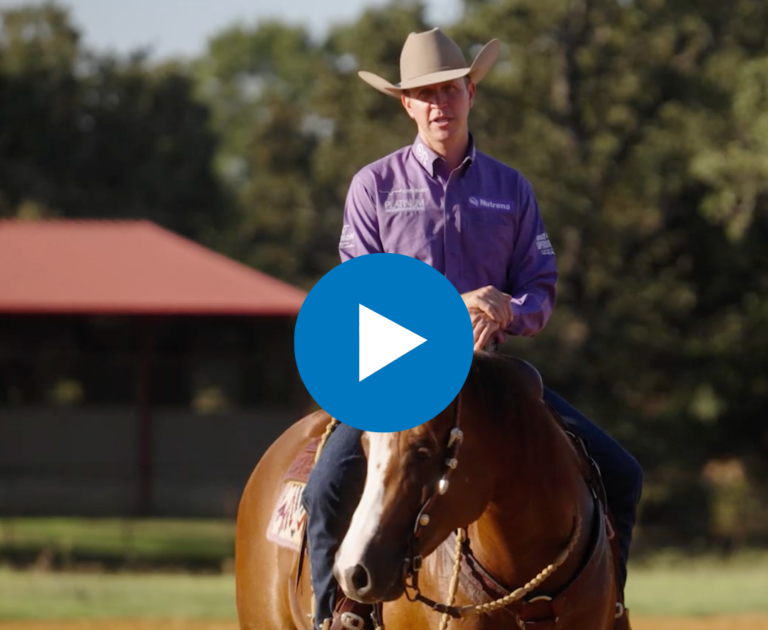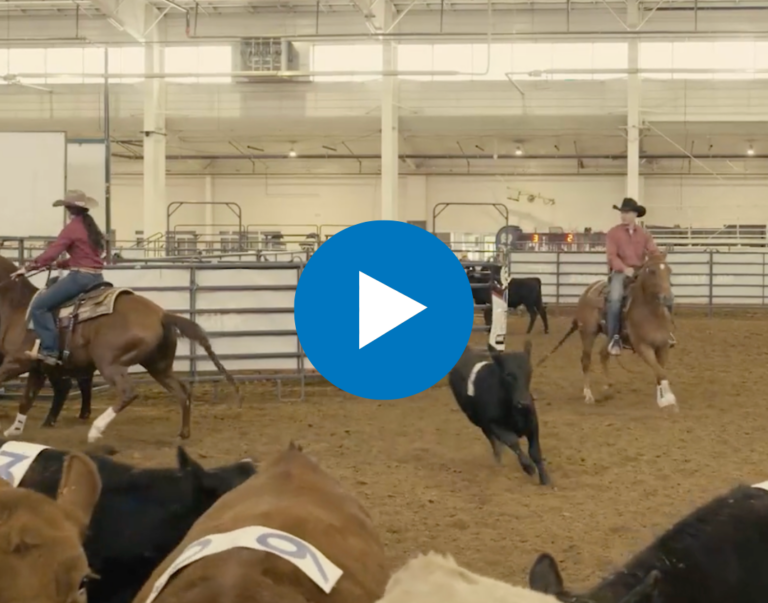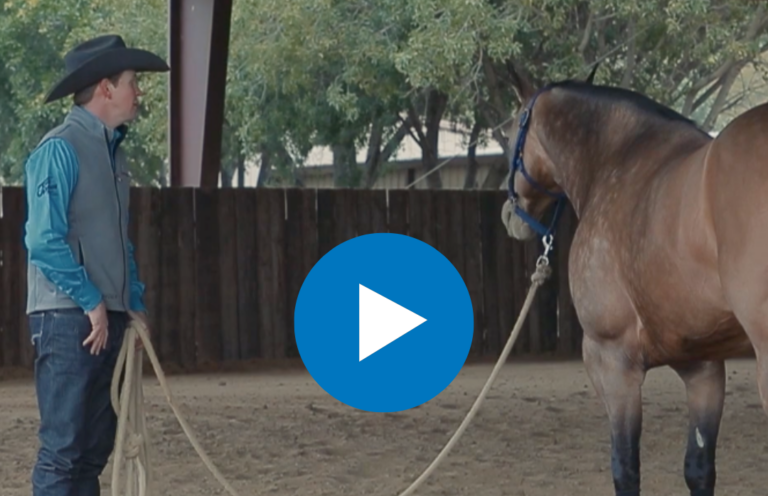While judging reining and other pattern-oriented classes like Western riding or trail, I’ve often seen the same scenario play out. A novice rider approaches the arena on her horse with all the right intentions. But as soon as they get before the judge, the rider becomes insecure and anxious. She presses heavily on the gas and rushes the horse through the pattern. Because the rider has done this before, the horse has learned to go, go, go! He charges along, assuming what comes next, and all the time the quality of each maneuver deteriorates. The same sort of thing happens when a rail horse is allowed to take his gait cues from the announcer, instead of waiting for his rider’s cues.

It only takes one or two classes like this for the horse to begin to “loose his wait,” as I call it. Translation: The horse stops waiting and listening for the rider to instruct him what to do. Instead, he hurries a step ahead, anticipating the next maneuver, and makes the decisions on his own.
Teaching your horse to always wait for your commands is especially important in reining, where the judge expects you to not just guide your horse, but also to control his every move. The moment your horse makes a decision to do something without your say-so, it negatively affects your score, because your horse is no longer willfully guided, and your maneuvers are sloppy and imprecise.
I’ve developed some techniques and strategies for the practice pen and the show arena to ensure your horse maintains his wait, you maintain control, and you see those scores you’ve been hoping for.
Deconstruct the pattern.
When schooling for pattern-oriented events like reining, there’s no reason to practice the patterns from start to finish every time. Running your horse through the same patterns at home or while warming up at shows only teaches him that the same things (circle, lead change, stop, etc.) happen at the same place, in the same sequence. Your horse will quit waiting for your cues, because he’ll be thinking, “I already know what comes next?I’ve done this a million times.” So when you’re training, break the pattern down into specific parts and work on them individually. Practicing this way will also help you avoid anxiety when showing. Instead of becoming overwhelmed by the pattern, you’ll have the mindset of accomplishing individual maneuvers.
Avoid the obvious.
In reining, you know you’ll be changing leads in the center of the pen in every class. You never want your horse to think the center of the pen is the place to change leads, because he’ll learn to anticipate the action whether you ask him to perform it or not. For this reason, never practice lead changes in the center of the pen. Teach your horse to change leads all over the arena: in a circle or on the rail, but not in the center. The horse will learn that a lead change can happen at any place at any time, and he’ll associate the maneuver with your command only. The same concept applies with spins, or any maneuver that happens in the same spot each time.
Expect the unexpected.
Bringing change and variety into the practice pen keeps your horse always asking, “What’s next?” To achieve this mindset, set your horse up to do a certain maneuver, but then ask him to do something else. This will aid in convincing your horse that he must constantly rely on you, because there’s no telling what’s coming up.
When working on reining maneuvers, you can apply this concept to lead departures. Walk your horse on a straight line, and use your leg and rein to tip his hip and nose a little to the same side, so his body makes a slight “C” shape. Your horse is now in the perfect position to depart on whichever lead his body is curved toward?but, don’t ask him to lope off just yet. Instead, walk him a few steps, then release him. Practice this all over the pen (always on a straight line).
When you’re ready for your horse to lope off, give him a smooch sound to mean “go.” He’ll learn that even though you put him in the position to go, you’re not always going to ask him to go. He has to wait and listen for that smooch. (Bonus: This exercise will also help your horse depart on the correct lead.)
Practice patience.
To develop the mental habit of waiting for your commands in your horse, you must build literal periods of waiting into your schooling. During maneuvers composed of many smaller actions, such as a sliding stop, a rollback, or operation of a trail gate, the pauses between those parts are especially important to maintaining control throughout the entire maneuver. Otherwise, your horse will slip into auto-drive.
So, when you’re practicing that trail gate, release the handle or rope loop, and instead of immediately going through the opening, sit there, and make your horse wait patiently until you ask him to start moving. If you’re working on reining stops and rollbacks, slow the maneuver down, think about the different components, and add periodic pauses in between them. Jog or lope a straight line, stop, pause, back up, drop your hand and take a breath, then roll back and go.
In the show ring, these pauses become so slight, they might not be visible to those watching. Nevertheless, it’s important they occur, mentally, in your horse. Pauses keep you from rushing, and also keep your horse in the habit of listening for your next cue instead of jumping ahead. In order to keep your horse honest in the show ring, there are some instances when it’s necessary to add visible pauses to your run, even if doing so will reduce your score. This is why you must think ahead and follow the next tip.
Plan priority and non-priority classes.
To strategically commit yourself to the future quality of your horse, you have to build non-priority classes into your show schedule. Without this, I think it’s impossible to maintain your horse’s wait. You must be willing to sacrifice some classes to work on waiting, especially if you have a horse that’s already lost his.
Example: If you’re going to a weekend reining show, and you’re entered in four classes, pick one priority class. In this class, pull out all the stops?ask your horse to go at full speed and remove any hesitations.
In the other three classes, if your horse isn’t waiting on you make the necessary corrections, even if it means a lower score. If you spin, and your horse makes an anticipatory move, stop and pause before you start your spin in the other direction. Take a breath, look around, and wait for your horse to relax before you cue as slowly as possible. In terms of your horse’s longevity, it doesn’t matter if the judge deducts from your score, because what you’re doing is more valuable. If you aren’t willing to make these corrections in non-priority classes, your horse will develop the notion that he only has to wait on you in the practice pen?while in the show ring, he can be the boss. The longer you let this happen, the harder it will be to re-instill the concept of waiting.
Dave Moore trains reiners and coaches non-pros at his Moore Performance Horses in Southwest Ranches, Florida. Before specializing in reining, Dave trained and showed Appaloosas in many events, including Western riding and trail. With his wife Kim, he’s produced more than 150 national and world champions. Dave is also a judge with the National Reining Horse Association and Appaloosa Horse Club.
This article originally appeared in the November 2010 issue of Horse&Rider.






